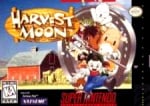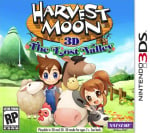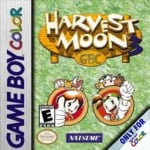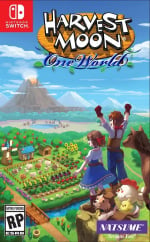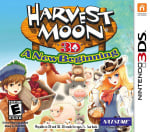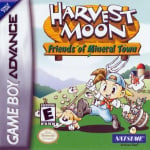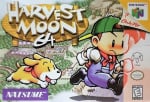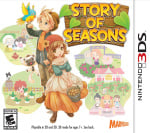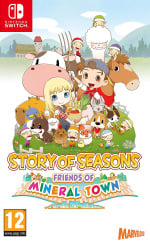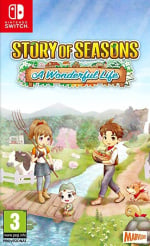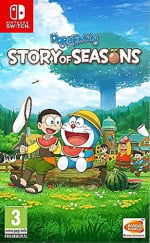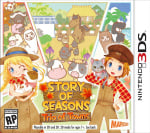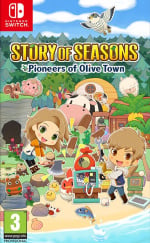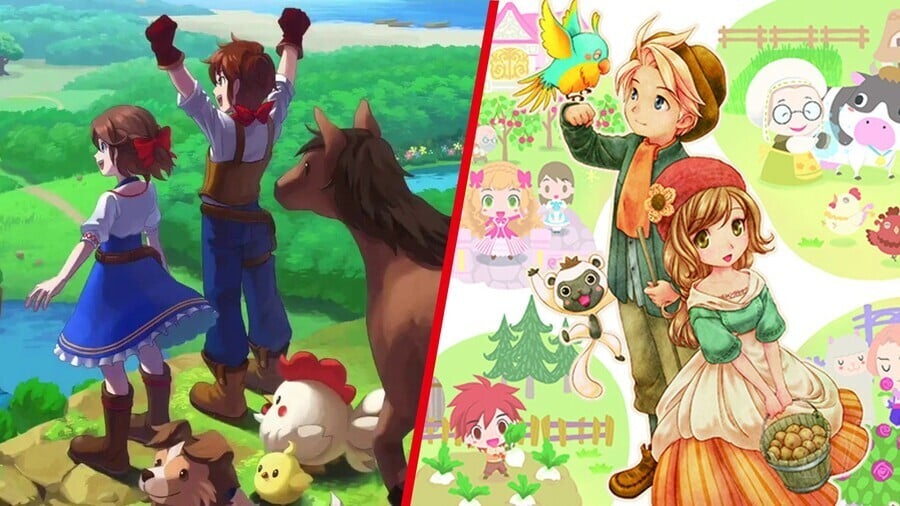
We've finally done it. After starting every article that concerns either Story of Seasons or Harvest Moon with a potted explainer of the schism between Natsume and Marvelous XSEED, we've finally sat down and put (electronic) pen to (electronic) paper and written out a long-form explanation of what "Harvest Moon" and "Story of Seasons" actually mean. Phew. Let's get into it...
Trimming Back The Tangle: The Story Of Harvest Moon
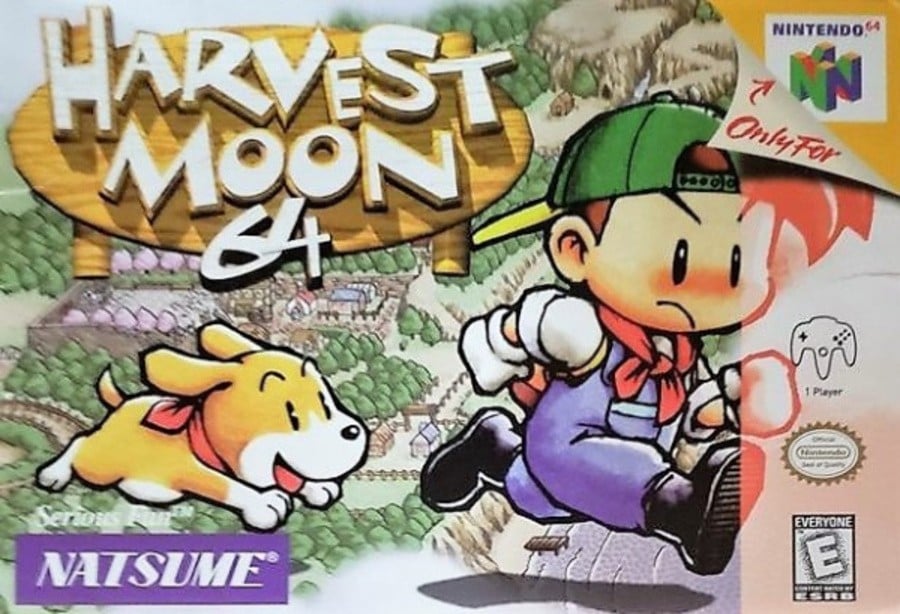
The TL;DR
- Japanese company hires English-speaking company to translate and publish their games in the west
- Because they picked it, the translated title is technically the intellectual property of the English-speaking company
- Japanese company decides to translate and publish the games themselves
- Because they don't own that translated title, they are legally not allowed to use it, so they come up with a new one
- Meanwhile, the English-speaking company decides to capitalise on their ownership of the title by using it to make their own series of games
- Everyone gets very confused
But the longer explanation is a little more complicated than that.
The seed of it all: 1987 - 1996
Confusing already? Yeah, it only gets worse
The first Harvest Moon game wasn't published until 1996, but this story starts in 1987, with the founding of a Japanese company called Natsume.
You don't need to know too much about Natsume's past, except to know that they established an American division in 1988, called Natsume Inc. In 1995, Natsume Inc. — the US-based arm of the company — decided to split from Natsume to become its own independent company, although they kept the name. Confusing already? Yeah, it only gets worse.
Back in Japan, though, a video game designer named Yasuhiro Wada was dreaming of a game that represented his idyllic childhood in rural Japan. The game was called Bokujō Monogatari in Japan — literally "Farm Story" — and garnered enough interest after its 1996 SNES release to draw the attention of publishers in other countries.
Eventually, it would be published by Nintendo in the EU, and Natsume in North America, and retitled as "Harvest Moon" as part of Natsume's English localisation. Thus, Harvest Moon was born.
Taking root: 1997 - 1999
Harvest Moon on SNES didn't do gangbusters, especially because the Nintendo 64 was already out by the time it released, but it did well enough to merit a sequel: Harvest Moon GB, which refined the formula, and which was then re-released as Harvest Moon GBC a year later, both helmed by Yasuhiro Wada at a studio called Victor Interactive Software.
[Reviews] were curious if such a sedate farming game could ever really become more than just a niche genre
Natsume was the chosen publisher in North America for both of these games, cementing their relationship with Victor Interactive Software, Wada, and Harvest Moon.
Lukewarm and limited reviews praised Harvest Moon GB, but were curious if such a sedate farming game could ever really become more than just a niche genre.
How wrong they were.

The fourth Bokujō Monogatari game, named Bokujō Monogatari 2 despite being the third game in the series (don't worry too much about it) was where the games really began to take hold of people's hearts. Until then, Harvest Moon had been a cult favourite — something that a few people loved, but most people had not heard of.
Here's what IGN had to say about Bokujō Monogatari 2 — translated to Harvest Moon 64 — in their glowing 1999 review:
"It's a rare occasion nowadays that a game with such simple graphics would even make it to store shelves, but Harvest Moon has that rare quality of being totally engaging and challenging.
We had entirely too much fun playing it for hours on end and disregarding all of the ways the game comes up short. An extremely engaging original experience on the N64. Doesn't quite satisfy the RPG-thirst, but you won't be able to put it down once you start playing."
Isn't it wild to read a review about a farming sim game before the concept of "farming sim game" existed?
Anyway, sales of Harvest Moon/Bokujō Monogatari games started to rise with the release of HM64, and thus was the farming sim craze born at last — with Natsume along for the ride.
Growing fast: 2000 - 2012
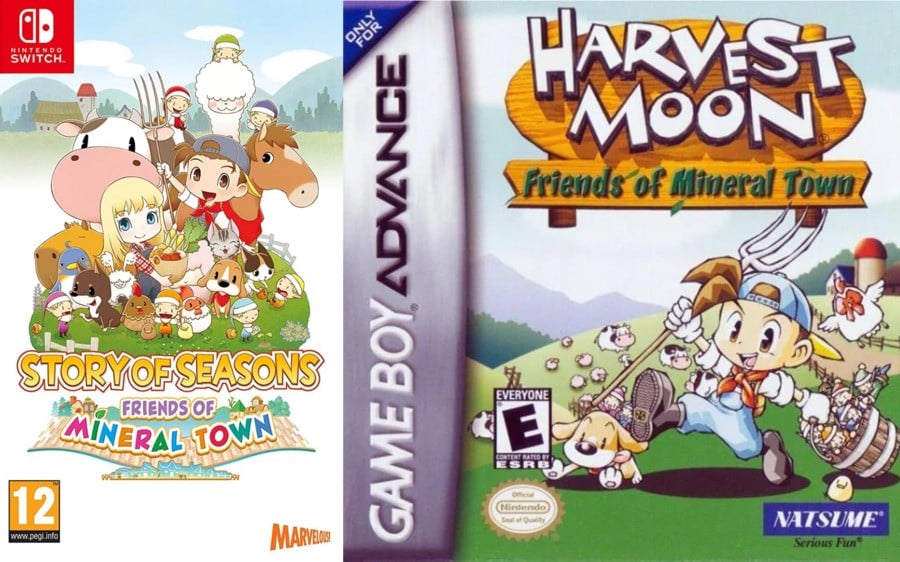
We can fast forward through the next few years, more or less, with some important stops.
[2000-2012] is when a lot of the best games came out
Between the year 2000 and 2012, Natsume Inc. continued to localise and publish the Bokujō Monogatari games in North America (and occasionally Europe) as "Harvest Moon". This is when a lot of the best games came out — Harvest Moon: A Wonderful Life on GameCube, Harvest Moon: Friends of Mineral Town on Game Boy Advance, and Harvest Moon DS: Grand Bazaar are just some of the highlights.
In 2003, Victor Interactive Software was acquired by Marvelous Entertainment, and was merged into the company to create Marvelous Interactive Inc.
In 2004, Marvelous Entertainment founded a UK-based company called Rising Star Games, and began publishing the Harvest Moon games through Rising Star in Europe. They eventually sold it to someone else, but don't worry about that too much.
In 2008, Marvelous Entertainment also announced that it would be partnering with Xseed Games, an American studio founded by former Square Enix employees, to publish games in North America. This began with PSP game Valhalla Knights 2, a game that was published by Marvelous Entertainment in Japan, Rising Star Games in Europe, and Xseed Games in North America.
Compounding the issue was the fact that the original developers of Bokujō Monogatari were becoming less involved with the games. Creator Yasuhiro Wada's role changed from game designer, to producer, to executive producer throughout the 2000s, until finally he left Marvelous some time between 2008 and 2010. He made some new projects, separate from Marvelous Interactive, called Hometown Story and Little Dragons Café. They were both not very good, although it was clear that Wada was trying to recapture the old spirit of Bokujō Monogatari — a simple, pastoral existence.
The schism: 2014
All of this leads up to 2014: The split between Natsume Inc. and Marvelous Inc.
We may never know the exact reasons for it, but in 2014 — after the release of Harvest Moon 3D: A New Beginning on the 3DS — Marvelous Inc. decided to part ways with Natsume Inc. for good, announcing that, from now on, the series would be titled "Story of Seasons", beginning with their next game.
Known as Bokujō Monogatari: Tsunagaru Shin Tenchi in Japan — "Farm Story: To The New World" — this new game for the Nintendo 3DS would be known in the west as simply "Story of Seasons" to cement the new English name and localisation. It released in Japan on February 27th, 2014, and in the following year for Europe and North America, with Xseed as the NA publisher (and localiser) and Nintendo as the EU publisher.
Evidently, Natsume had some warning [about the split]
Evidently, Natsume had some warning, because they announced their own game, Harvest Moon: The Lost Valley, during E3 in June 2014, for a release later that year — undercutting the western release of Story of Seasons by several months.
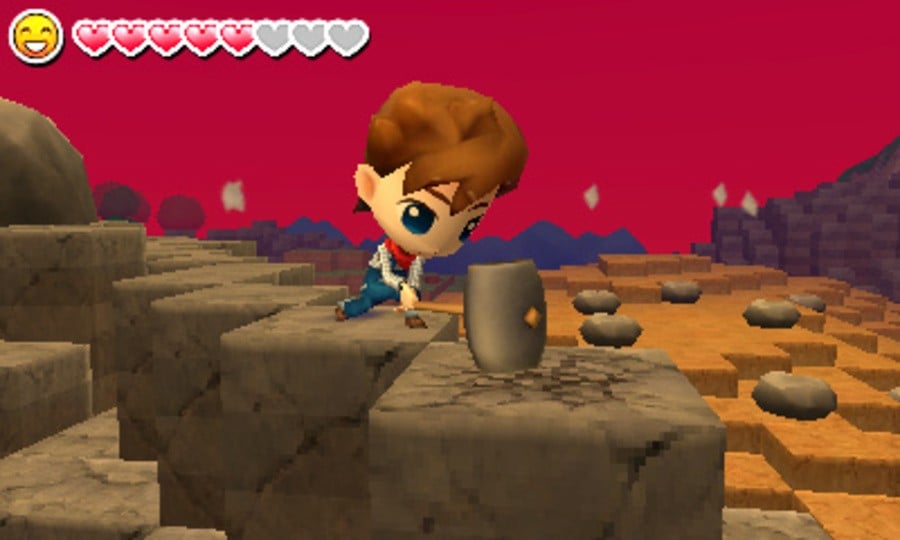
Story of Seasons has a score of 76 on Metacritic. Harvest Moon: The Lost Valley has 46.
A narrative began to grow around the two games, that what was now "Harvest Moon" was a cheap cash-in from Natsume, hoping to capitalise on the name without the Bokujō Monogatari dynasty and legacy behind it. Here's an excerpt from our review of Lost Valley:
"The Lost Valley is a Harvest Moon game by name and premise only, leaving the core mechanics that have defined the series up until this point aside and aiming to start from scratch.
It's a bold move for Natsume to develop a game that strays away from the series' conventions and tries new things, but the overall experience is lacking the polish and charm that the Harvest Moon name has come to represent."
We gave it 4/10.
Growing together, but apart: 2014 - 2021

In the following years, Natsume continued to make Harvest Moon games, and Marvelous teamed up with Xseed to make Story of Seasons games. Their release dates have often jostled for position, with Natsume occasionally beating Marvelous Xseed to the punch, as you can see here:
| Story of Seasons | Harvest Moon |
|---|---|
| Story of Seasons NA release: March 31, 2015 |
Harvest Moon: The Lost Valley NA release: June 19, 2015 |
| Story of Seasons: Trio of Towns NA release: February 28, 2017 |
Harvest Moon: Skytree Village (3DS) NA release: November 8, 2017 |
| Doraemon: Story of Seasons NA release: October 11, 2019 Story of Seasons: Friends of Mineral Town NA release: July 14, 2020 |
Harvest Moon: Mad Dash NA release: October 29, 2019 |
| Story of Seasons: Pioneers of Olive Town NA release: March 23, 2021 |
Harvest Moon: One World NA release: March 2, 2021 |
| Story of Seasons: A Wonderful Life NA release: Summer 2023 |
Harvest Moon: The Winds of Anthos NA release: Summer 2023 |
Phew.
But did Natsume's Harvest Moon games get any better than the 4/10 game that was Harvest Moon: The Lost Valley? Well... yes. But not by much. Here are the rest of the games' Metacritic averages:
- Harvest Moon: Skytree Village (3DS): 59
- Harvest Moon: Seeds of Memories (iOS): 68
- Harvest Moon: Mad Dash (Switch): Only two reviews — 37 and 20 — so make your own average
- Harvest Moon: Light of Hope (Switch): 62
- Harvest Moon: One World (Switch): 52
For comparison:
- Story of Seasons (3DS): 76
- Story of Seasons: Trio of Towns (3DS): 74
- Story of Seasons: Friends of Mineral Town (Switch): 77
- Doraemon: Story of Seasons (Switch): 75
- Story of Seasons: Pioneers of Olive Town (Switch): 71
Admittedly, none of those scores are going to blow anyone away, but there's a clear difference in quality all the same that has led to people warning fans of the original Bokujō Monogatari away from anything new labelled "Harvest Moon".
Where are we now? 2023 onwards
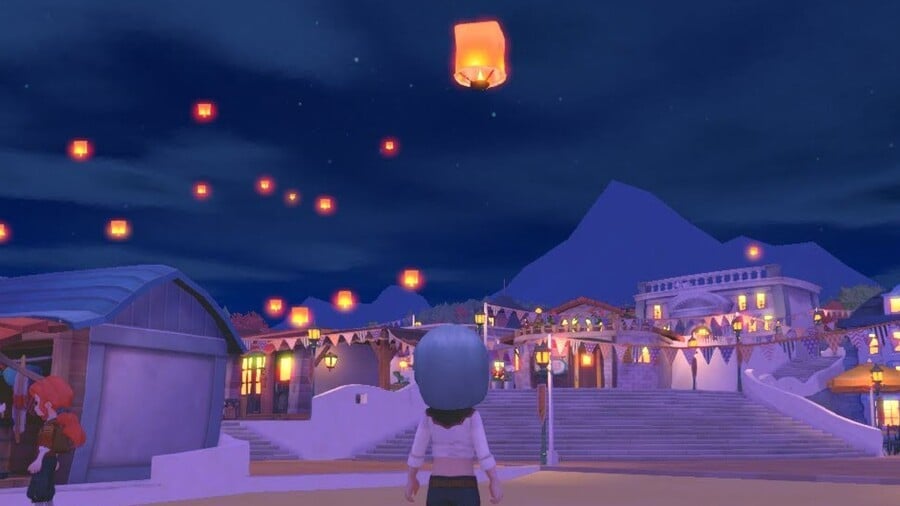
There's a lot that we've left out of this explainer for both time and complication reasons, but that basically brings us up to date. There is, apparently, no ill will between Marvelous Xseed and Natsume, even if the split was a "surprise" to the latter, and it's a little inaccurate to call Marvelous the "original" creators of Harvest Moon anyway, since most of the original developers have since departed the company, and they technically only came onto the scene in 2003.
The difference is similar to whether you should buy name-brand or supermarket own-brand cereal
But, for the most part, the difference between Story of Seasons and Harvest Moon is similar to whether you should buy name-brand or supermarket own-brand cereal. The quality is usually higher for name-brand cereal, but if you really like cereal, you can always find something to like about the lower-quality one — and who knows, some day the lower-quality one might even taste nicer.
You might argue that this seemingly adversarial relationship is good for business, too — after all, it was Natsume who first published a Harvest Moon game on PC in 2017, which Marvelous didn't do until they brought Friends of Mineral Town to PC in 2020.
Sure, it's confusing when you're looking at a game shop's shelf [Surely no one goes to physical game shops any more — Ed.] and the title "Harvest Moon" brings back fond memories of GameCube and Game Boy Advance games, only for a nearby gamer to dive in front of the shelf like they're taking a bullet, yelling "NO THAT'S NOT THE ORIGINAL BOKUJO MONOGATARIIIIII", but hopefully this explainer has... explained why that is.
And now you know.
